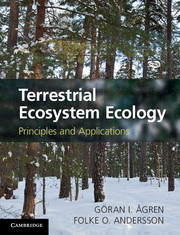Book contents
- Frontmatter
- Contents
- List of Boxes
- Preface
- Prologue Environmental changes and ecosystem effects: two historical examples
- Section I History and concepts
- Section II Ecosystem structure and function
- Section III Ecosystem dynamics at different time scales
- Section IV Applications
- Appendix 1 Abbreviations
- Appendix 2 Glossary
- Appendix 3 Some useful values and symbols used to represent them
- Appendix 4 Information and data on selected ecosystems
- References
- Index
- Plate section
Section I - History and concepts
Published online by Cambridge University Press: 05 June 2012
- Frontmatter
- Contents
- List of Boxes
- Preface
- Prologue Environmental changes and ecosystem effects: two historical examples
- Section I History and concepts
- Section II Ecosystem structure and function
- Section III Ecosystem dynamics at different time scales
- Section IV Applications
- Appendix 1 Abbreviations
- Appendix 2 Glossary
- Appendix 3 Some useful values and symbols used to represent them
- Appendix 4 Information and data on selected ecosystems
- References
- Index
- Plate section
Summary
History and concepts
Understanding the environment has always been important for mankind. In this section we briefly trace how this has led to the development of modern ecology. We will also define the scientific arena of ecology and in particular that of ecosystem ecology and how it relates to other scientific disciplines. Ecosystem ecology relies on some fundamental cornerstones: mass balance, limiting nutrients, optimality and steady state. These concepts are explained and used to demonstrate our philosophical attitude towards the discipline.
- Type
- Chapter
- Information
- Terrestrial Ecosystem EcologyPrinciples and Applications, pp. 7Publisher: Cambridge University PressPrint publication year: 2011

